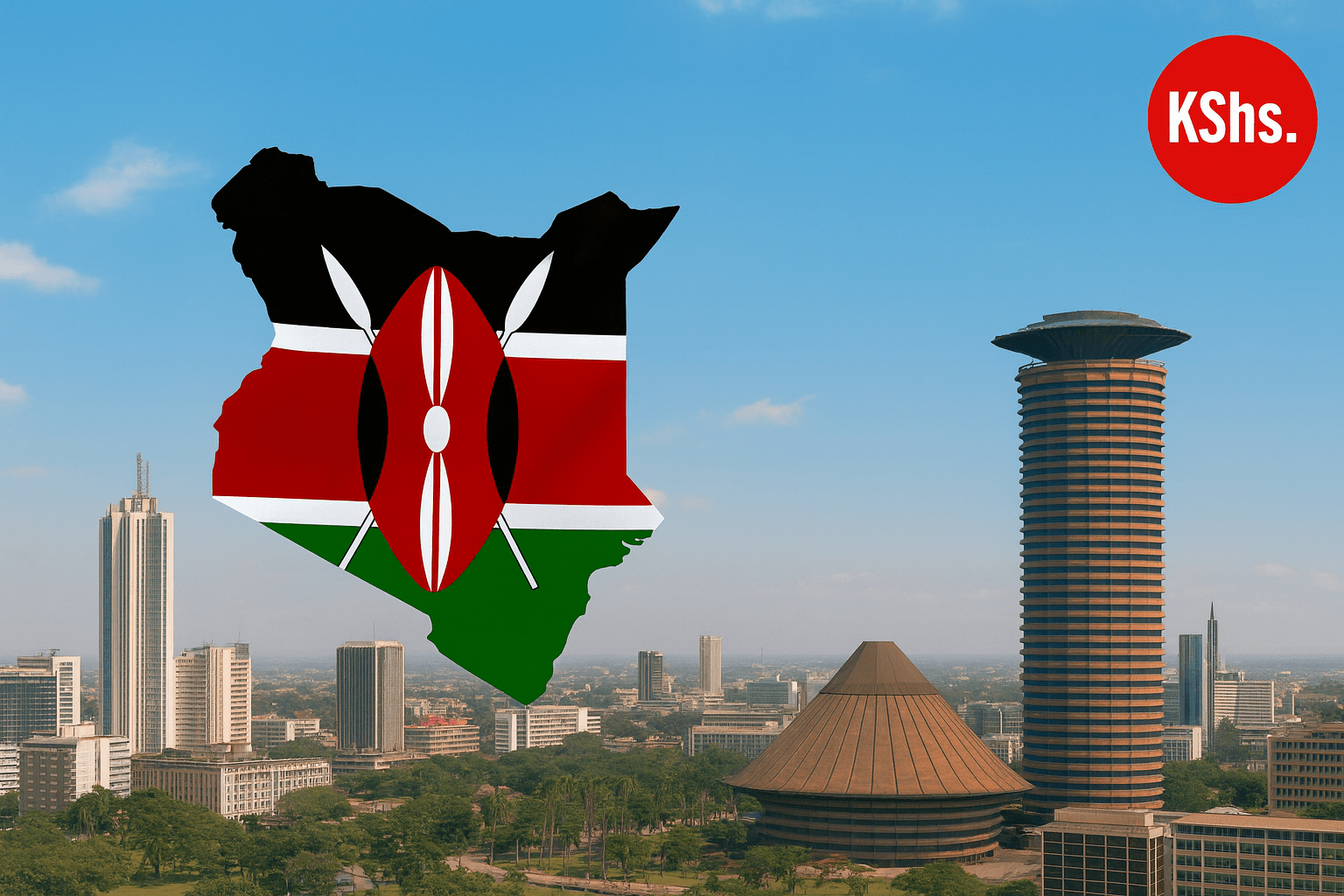
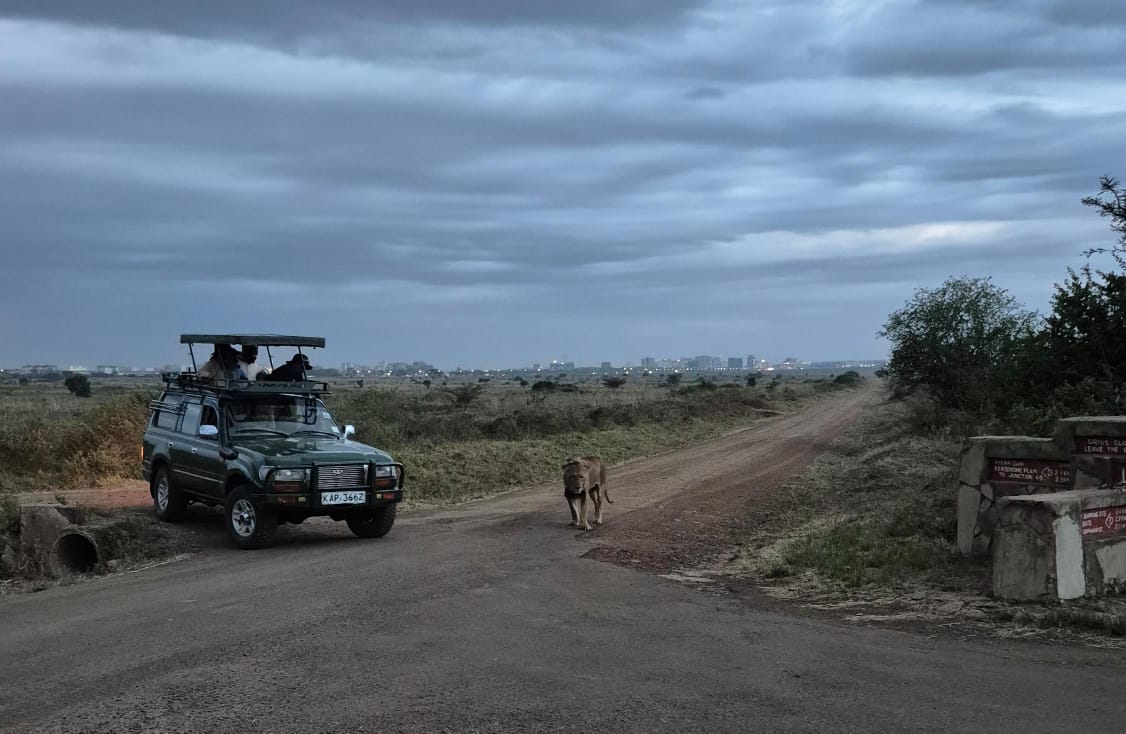
Tourists look at a lion in Nairobi National Park / CYNDY ALUOCH
The sun had barely slipped behind the horizon when we entered Nairobi National Park, a wild sanctuary that begins where the city ends.
Stepping into the park felt like crossing an invisible line between two worlds as the contrast is surreal: wild Africa unfolding against the backdrop of a modern city.
Our visit began just after 5pm. The air was cool and still, carrying the hum of Nairobi’s evening traffic in the distance.
At the entrance gate, we were asked to show our identification cards before accessing the park just to ensure we were Kenyan citizens since the fee is different for foreigners.
One of the rangers was also assigned to our safari vehicle.
Within minutes, the city lights started fading into the background, replaced by the raw whispers of the African night.
Our safari vehicle crawled along the dirt tracks, headlights slicing through the darkness.
Within a short moment, the guide’s voice lowered to a near whisper, as though respecting the silence of the wilderness.
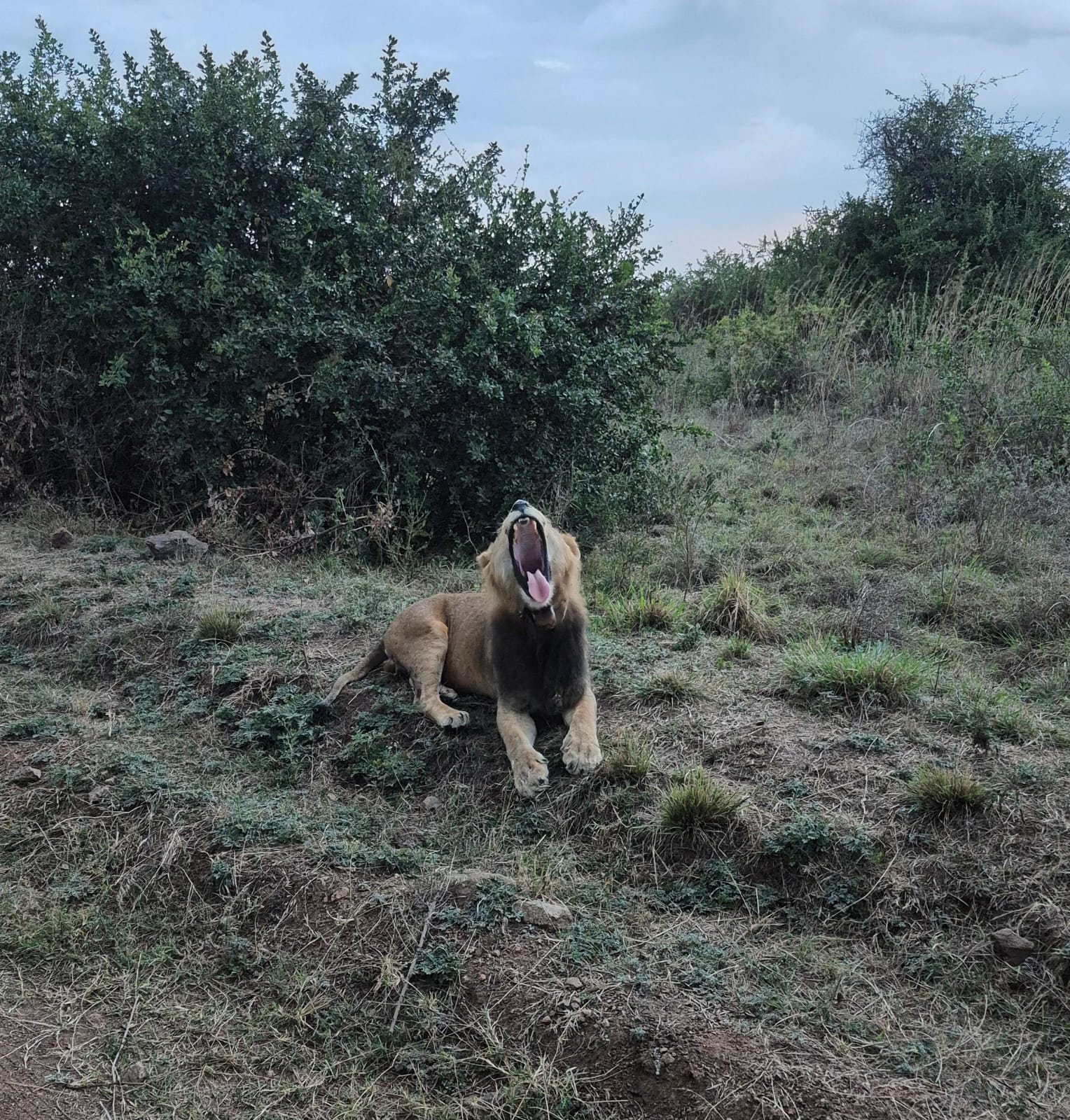
“Selengei mwenyewe! Look at him, relaxed like he has been waiting for us,” the ranger said.
We saw a lion calmly resting ahead of us, close to some thickets.
“This is one of the male lions we have in the park. He is a dominant male of the Kingfisher pride,” the ranger said.
“He had been injured not long ago but has recovered so well and is now in full control.”
Selengei sat with a quiet confidence, as if aware that he was the star of the safari show.
Everyone in the safari vehicle ensured they captured beautiful shots of the animal calm in his habitat.
The ranger told us how lucky we were to get to see the animal without having to go so deep in the park as it was a rare thing for most tourists.
The lion then let out a roar before slowly getting up and, with quiet authority, his sleek frame brushed against the tall grass.
“I am sure this lion can see us and sense that we are foreign in its habitat. Don’t you think he can jump on the safari vehicle and attack us? ” one of us asked in fear. Luckily, no such thing happened.
“Mammals like lions have two types of colour receptors,” the ranger explained as we slowly followed the lion.
"This means they see fewer colours, mainly shades of blue and yellow, but they can’t distinguish red and green as we do. So their vision is more muted."
The closeness to such raw power was humbling since there is a thrill in seeing lions in their natural habitat. No cages, no barriers, just pure wilderness.
Watching Selengei melt into the shadows was a reminder of just how alive the night here was.
Deeper into the park, the atmosphere thickened with mystery.
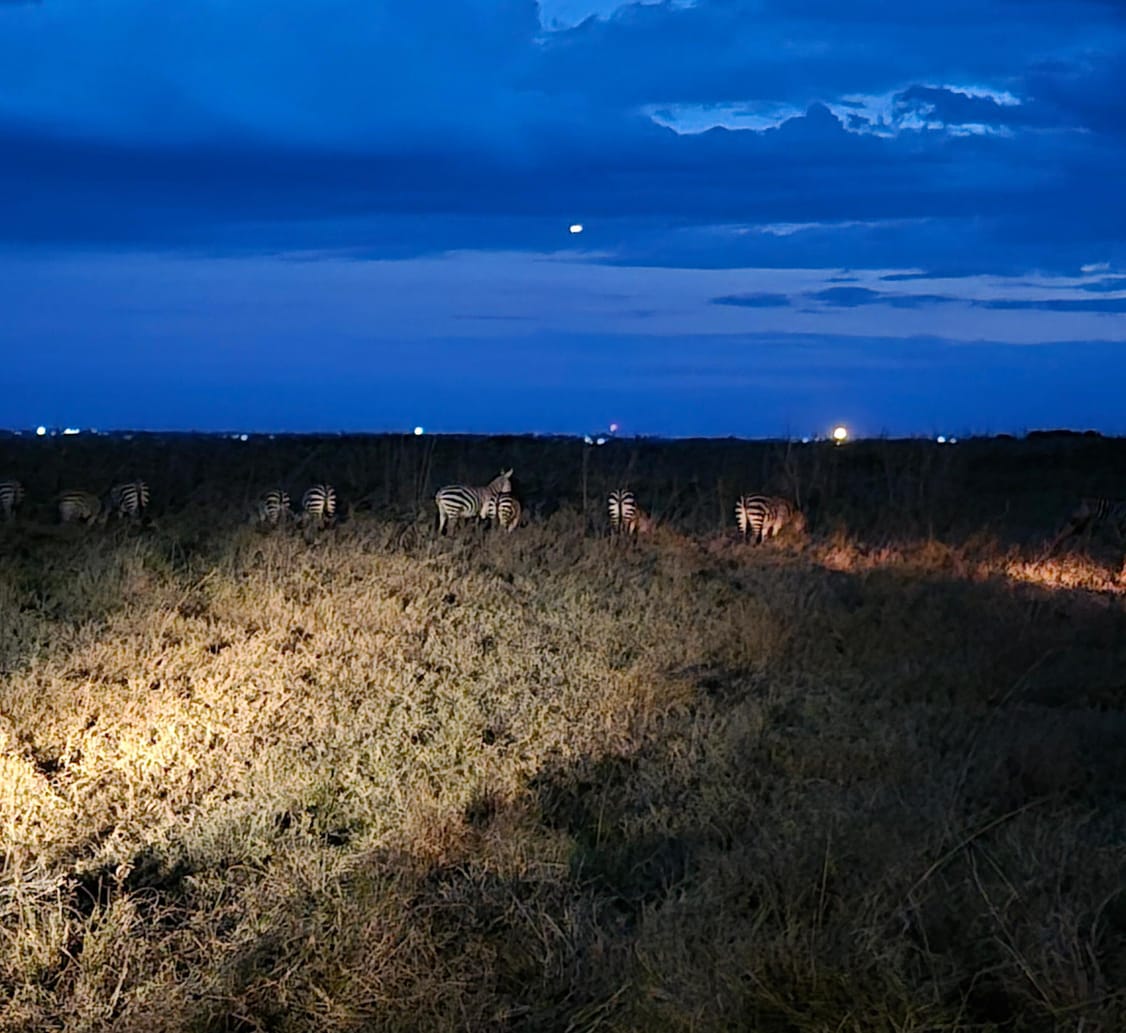
We then stopped by a small watering hole, where we spotted a herd of zebras moving gracefully under the moonlit sky.
Their black and white stripes shimmered like a living pattern against the savannah.
It felt like the animals were holding a secret council, wary of predators lurking nearby.
“Zebras often stay in herds for protection. Their black and white stripes help to confuse predators when they move as a group. A typical herd is made up of one stallion, several mares and their young ones,” the ranger said.
“Though larger groups can form when different families come together, especially around water sources or during migration.”
What struck me most was the contrast in the national park as we could glimpse the twinkling skyline of Nairobi in the same breath.
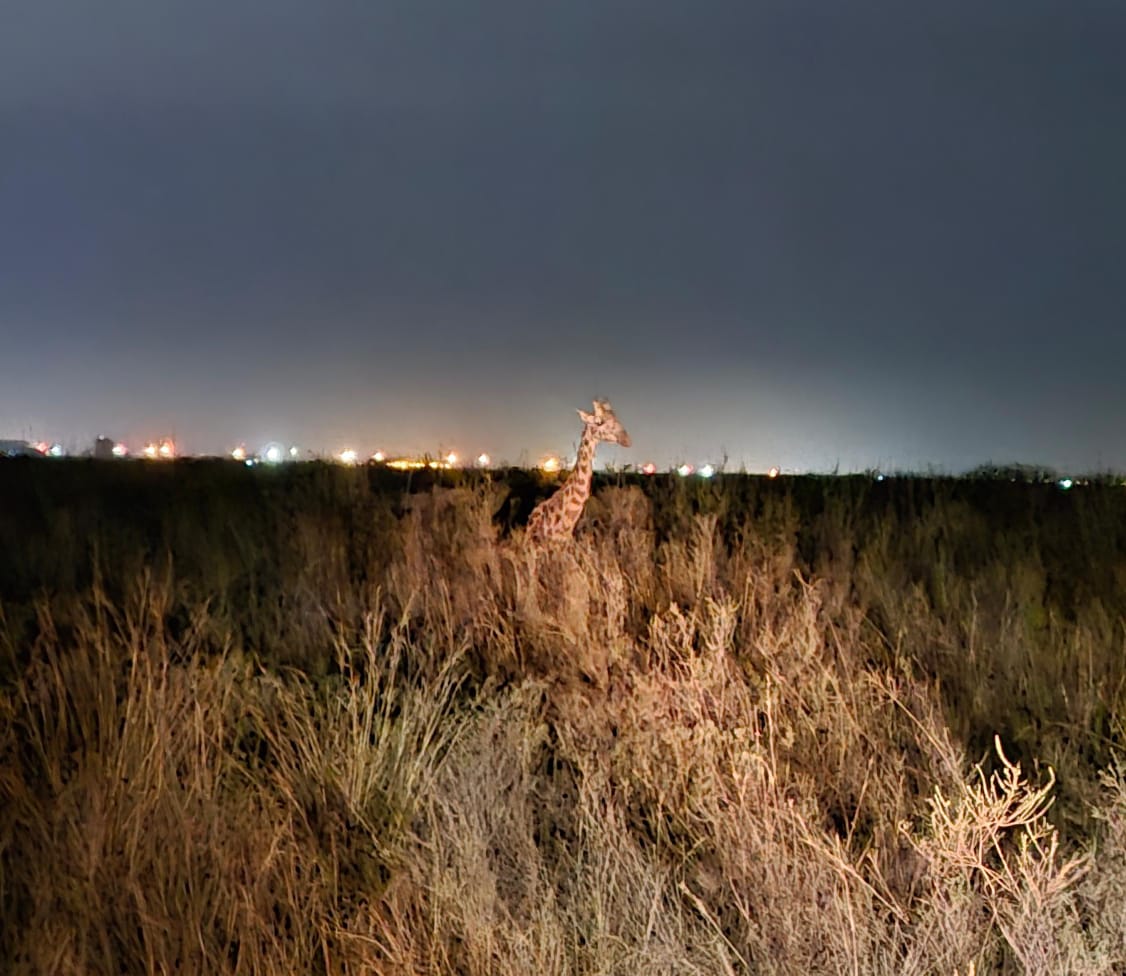
As we drove through the park in the dark, the ranger kept her flashlight on as they use it to easily spot animals.
“Look, look! I see a giraffe over there,” I happily shouted, pointing into the thickets.
Just by everyone shifting their gaze, they caught sight of a giraffe rested beneath the quiet shadows of acacia silhouettes.
The giraffe was still with no movements at all.
“Wow, the giraffe looks so beautiful, and it's interesting how its long neck makes it easily visible even in the dark,” one of us said.
To our surprise, the ranger told us that the giraffe was actually asleep and had its legs tucked beneath it.
We were all shocked at how a giraffe could still have its long neck scanning the horizon despite folding its towering limbs.
Few places in the world offer such a surreal blend of urban energy and wild authenticity.
According to Kenya Wildlife Services, tourism in Kenya offers numerous benefits to the country.
"Tourism generates foreign exchange earnings and creates employment opportunities, besides stimulating economic growth. It also helps preserve and showcase Kenya’s rich cultural heritage, traditions and indigenous practices and values," KWS says.
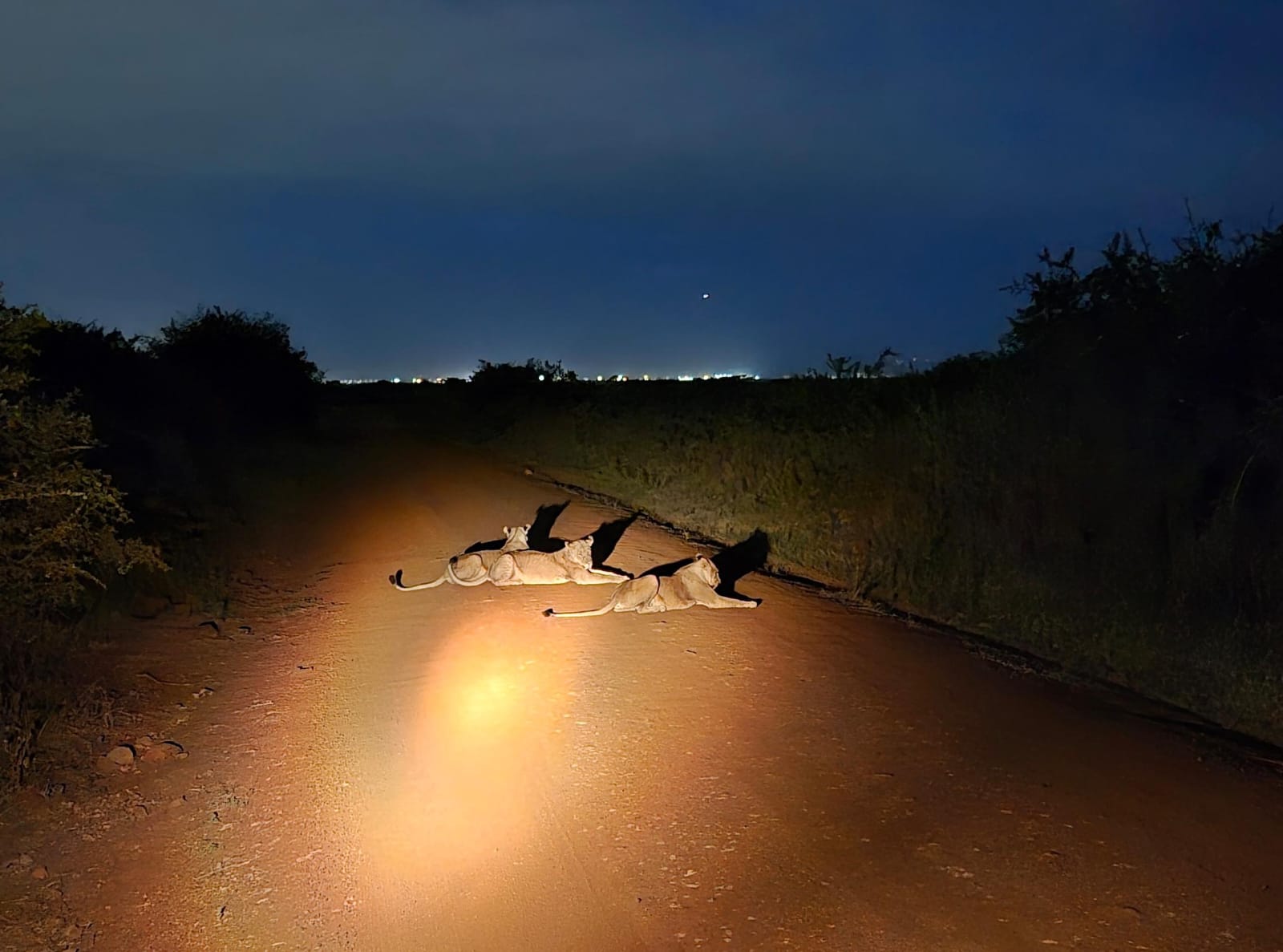
As we drove on, the guide switched off the engine, inviting us to simply listen.
The night came alive in layers, the distant roar of a lion, the shrill chirp of crickets, the rhythmic rustle of leaves as unseen creatures moved about.
It was humbling, a reminder that life thrives here in ways often hidden from daytime visitors.
The climax of the night came near the plains, where we spotted a pride of lions sprawled lazily under the stars.
“You have been so lucky to have seen Selengei plus more lionesses in the park within a short period of time,” the ranger said with a smile on her face.
We all stared in awe, cameras in hand, each making sure they get a shot of the lionesses that lay on the road ahead of us.
The city light flickered faintly in the background, but at that moment, Nairobi felt worlds away.
By this time, the night air inside the safari vehicle was cold and sharp, settling over Nairobi National Park like a quiet blanket.
The hum of the engine, however, broke the stillness as the wind brushed past, carrying the faint scent of acacia and dust.
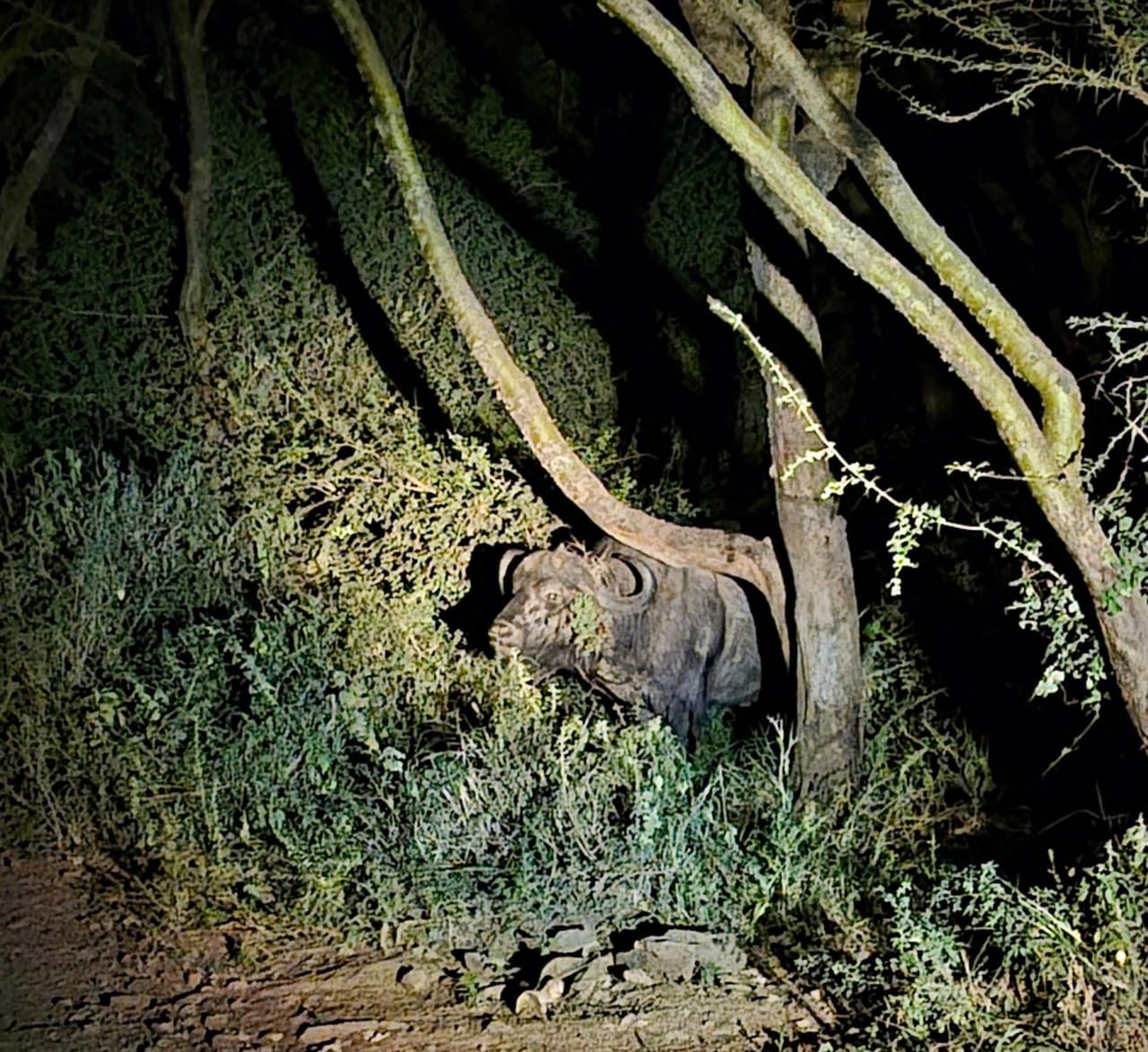
Driving deeper into the park, I felt an overwhelming sense of calm as I held onto my scarf tighter, enjoying the completely different world compared to its sunlit savannah.
“You see the buffalo inside the thickets?” the ranger said, flashing her light into the bushes.
We spotted a buffalo quietly chilling in the dark bushes, and unlike the zebras, we could not spot any other around.
“Older male buffalos are mainly spotted alone since they get chased away by the younger ones. That is why you will see them alone and not in groups,” the ranger said.
We again stopped by a swamp where we noticed so many hippos in the water.
“Hippos often leave their pools to graze in the quiet, and owls take flight, their wings cutting silently through the night,” the ranger said.
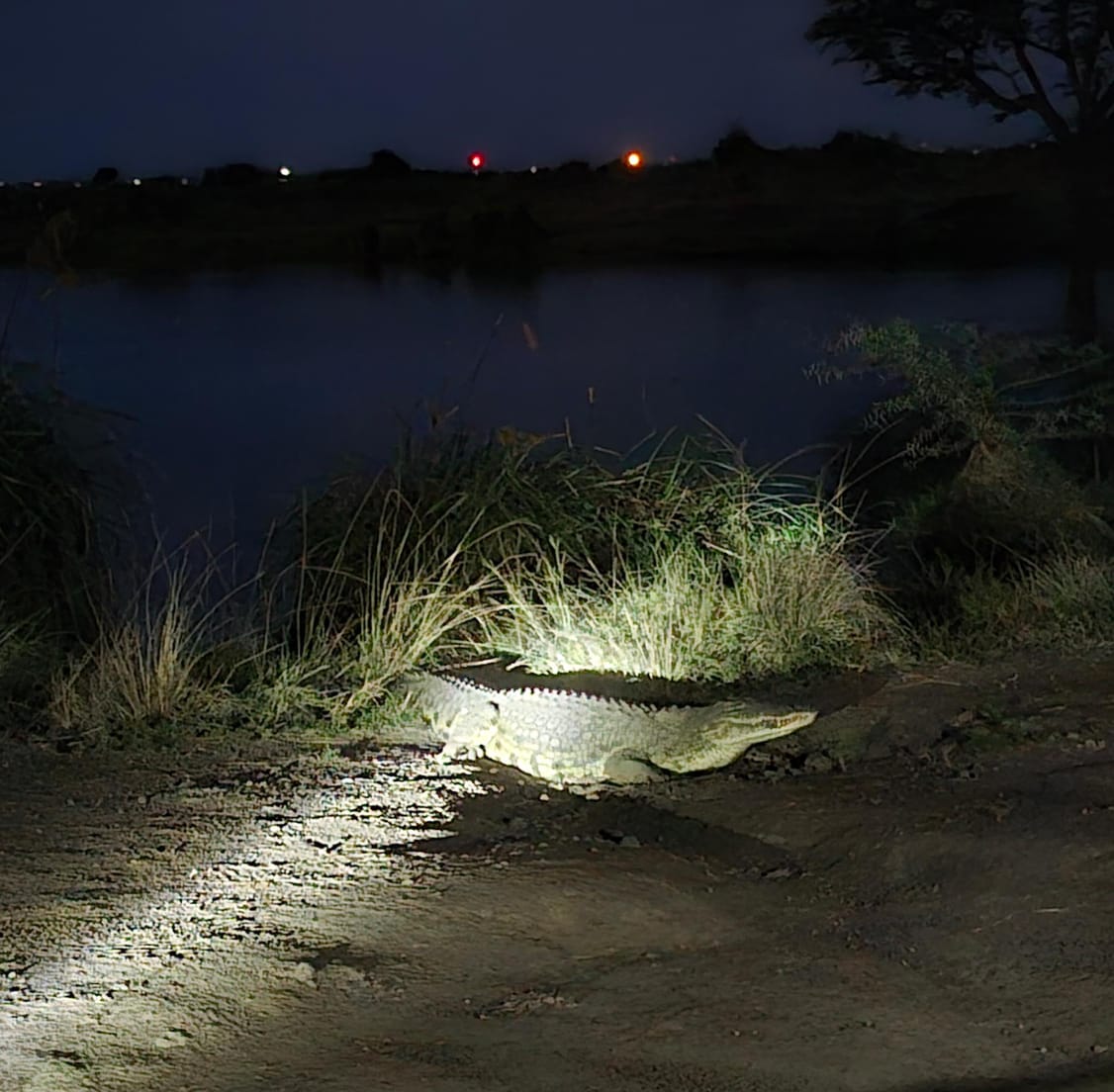
Just on the bank away from the hippos, a crocodile lay motionless, with its scaly skin looking like ancient armour and its muscular tail stretched behind it like a whip.
"Despite how full the crocodile looks and how big the hippos' stomachs might be, they are still very dangerous," the ranger said hilariously.
As we watched the wildlife under the wild night, we also enjoyed the beautiful skyline glow in the background.
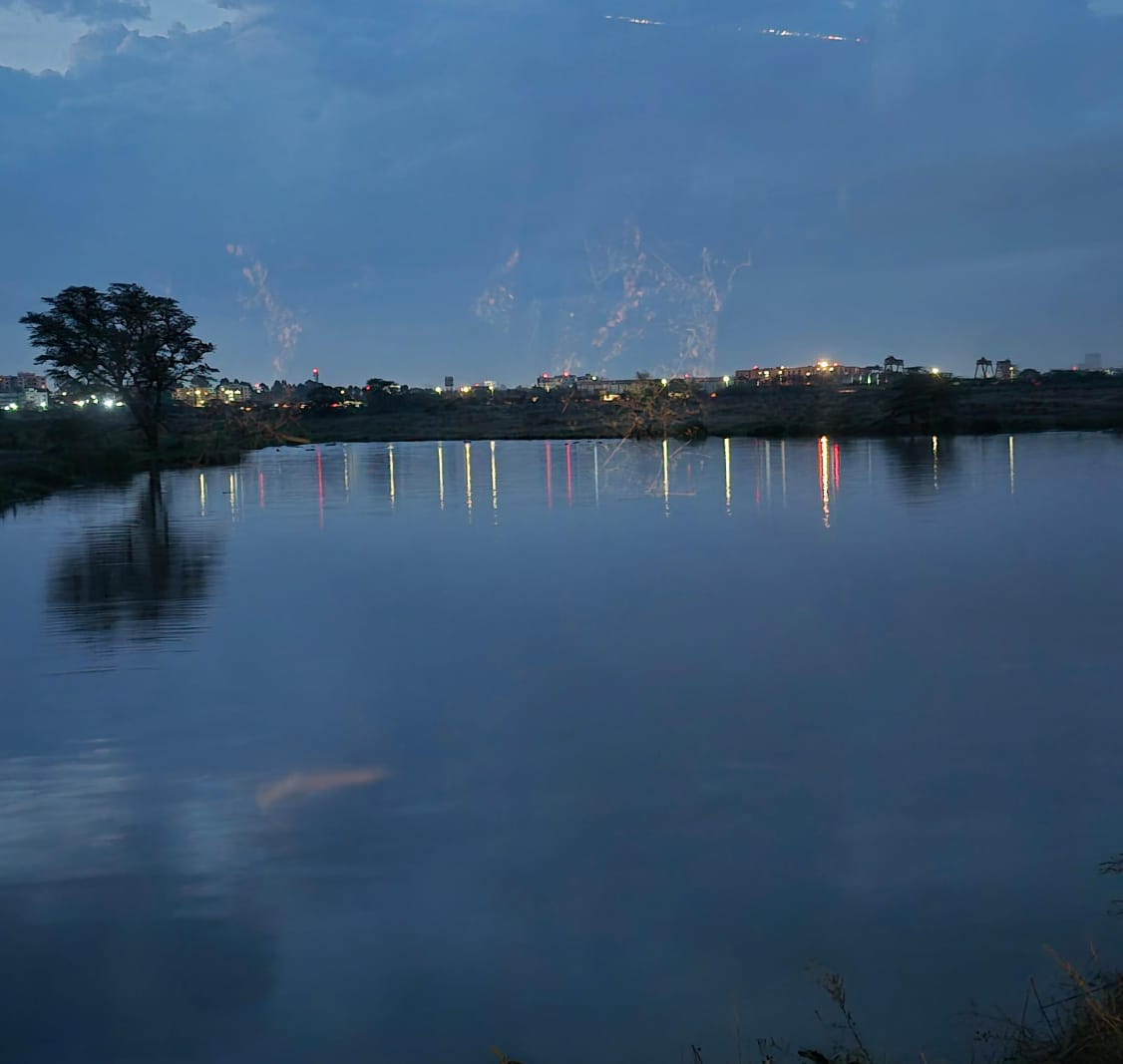
It was the memory of silence punctuated by primal sounds, the thrill of being close to predators, and the magic of witnessing nature’s drama against a city skyline.
On our way out, we could hear the rhythmic clatter of wheels on steel cutting through the silence.
The Standard Gauge Railway (SGR), Kenya’s modern link between the Coast and the capital, snaked its way through the wild heart of the city, a rare scene where nature and technology coexist.
"Those in the train can catch silhouettes of acacia trees stand against the moonlit sky," the ranger told us.
"Occasionally, the gleam of eyes catches the light, perhaps a lion resting or a herd of zebras grazing under the stars."
One of us, Grace, said, "“It’s surreal to see wildlife at this hour. You forget you’re still in Nairobi.”
The train’s passage through the park, once a point of debate, had now become a symbol of balance between progress and conservation.
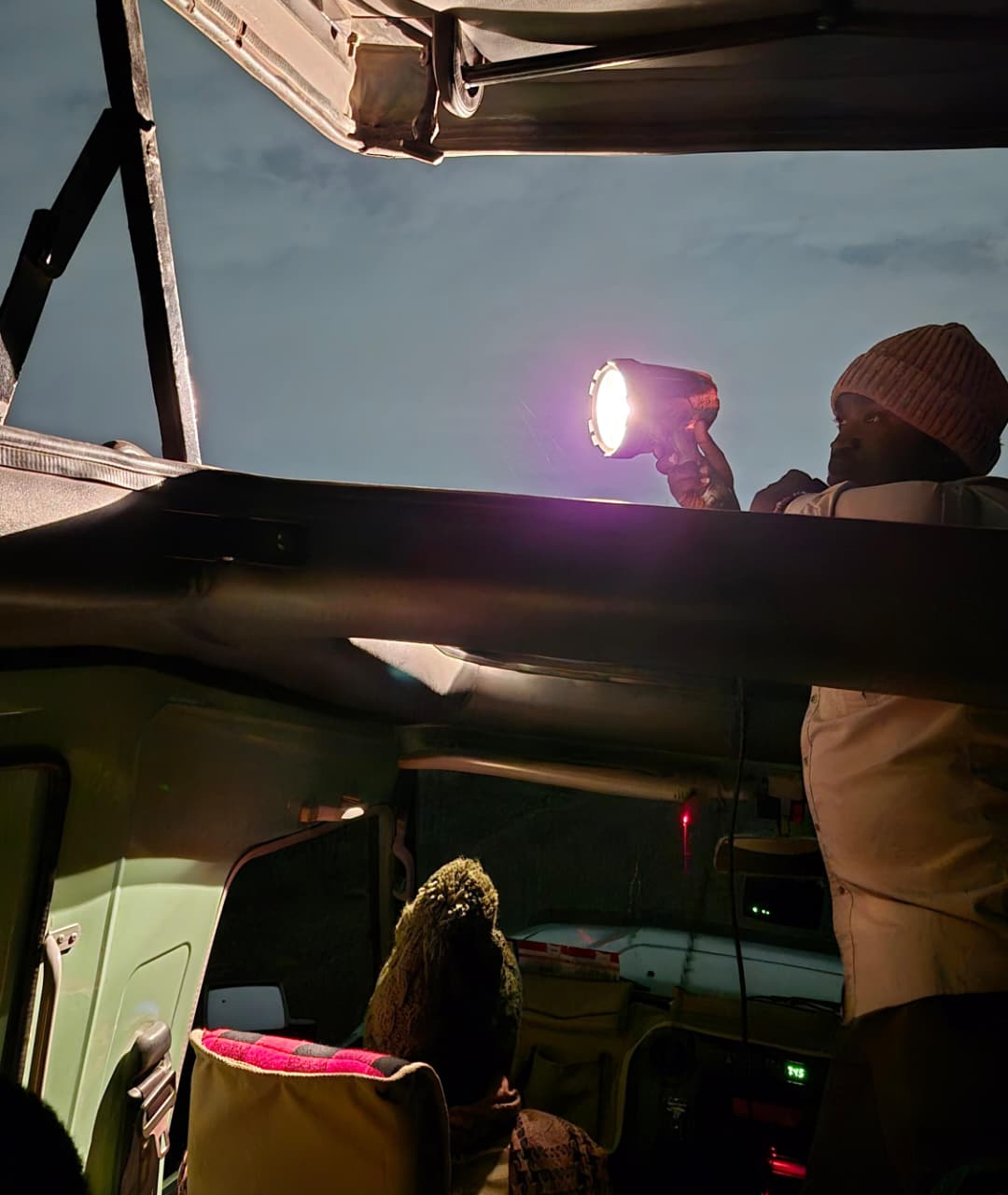
A ranger flashing his torch inside Nairobi National Park at night/ CYNDY ALUOCH
According to Kenya Railways, strict measures are in place to protect the animals, including elevated tracks and sound barriers.
"For rangers stationed nearby, the sight never loses its wonder. When the train glides by under the moon, it feels like two worlds meeting,” the ranger said.
As the locomotive hummed away, the night returned to stillness, with only the distant roar of a lion reminding us all that this was still the wild.
I wore a smile the whole time as every information was interesting and captivating to me.
In my head, I had so many stories to tell those out there, including my family members.
Nairobi National Park at night is not just a safari but also a reminder that wilderness still breathes, even at the edge of a bustling capital.
The cool night air brings movement from smaller nocturnal creatures. From porcupines rustling through the undergrowth, to spring hares darting across open ground, to bush babies leaping between acacia branches with glowing eyes.
It’s a rare experience whereby the pulse of the African wilderness and the energy of a modern capital meet, making Nairobi National Park at night both enchanting and surreal.
It was a moment of perfect balance. City life on one side, untamed wilderness on the other.
As the vehicle rolled toward the park’s main gate, the city lights of Nairobi began to reappear on the horizon, a reminder of how close the wild and the urban truly are.
Leaving the park, I carried with me more than photographs.



